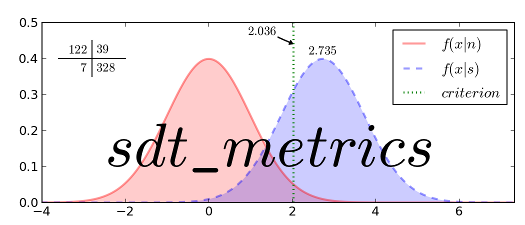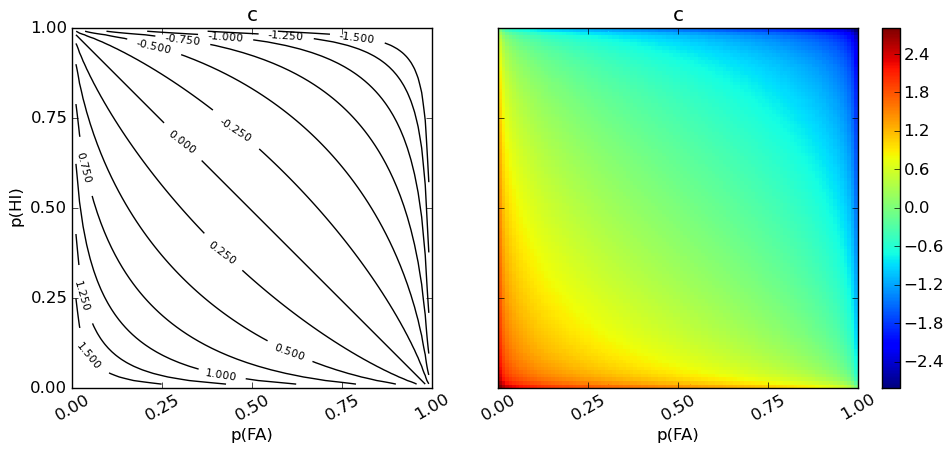


c: parametric measure of response bias
Generally recommended as a better measure than beta [1], [2], [3]. First reason being that d’ and c are independent [4]. Forumula from Macmillan [5]. Applies Macmillan and Kaplan correction to extreme values. [6].
See also
[1] Banks W. P. (1970). Signal detection theory and human memory. Psychological Bulletin, 74, 81-99.
[2] Macmillan, N. A., and Creelman, C. D. (1990). Response bias: Characteristics of detection theory, threshold theory, and nonparametric indexes. Psychological Bulletin, 107, 401-413.
[3] Snodgrass, J. G., and Corwin, J. (1988). Pragmatics of measuring recognition memory: Applications to dementia and amnesia. Journal of Experimental Psychology: General, 117, 34-50.
[4] Ingham, J. G. (1970). Individual differences in signal detection. Acta Psychologica, 34, 39-50.
[5] Macmillan, N. A. (1993). Signal detection theory as data analysis method and psychological decision model. In G. Keren and C. Lewis (Eds.), A handbook for data analysis in the behavioral sciences: Methodological issues (pp. 21-57). Hillsdale, NJ: Erlbaum.
[6] Macmillan, N. A., and Kaplan, H. L. (1985). Detection theory analysis of group data: Estimating sensitivity from average hit and false-alarm rates. Psychological Bulletin, 98, 185-199.
Calculates metric based on hit, miss, correct rejection, and false alarm counts
Calculates metric based on hit rate and false alarm rate
based on the number of args and the availability of .prob routes call to appropriate method.